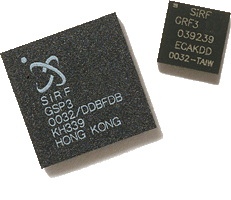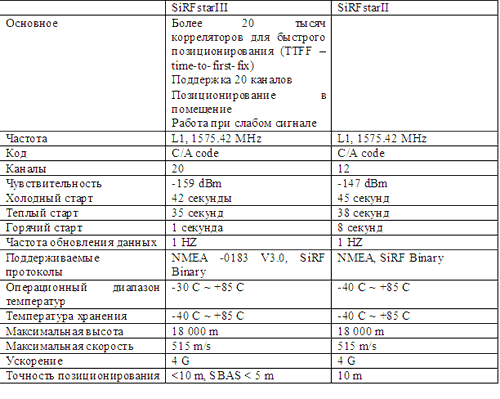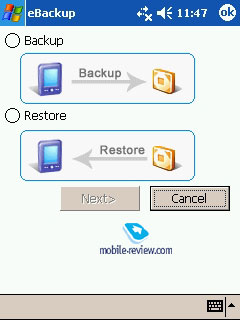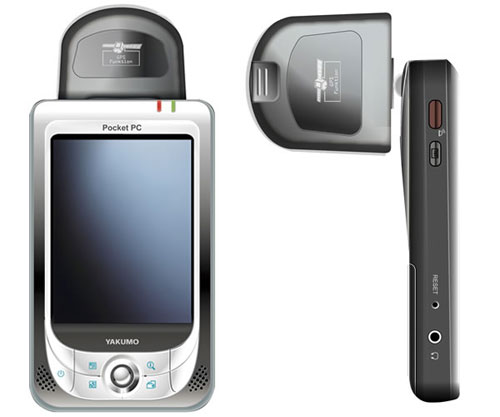|
|
Navi PDA MiTAC Mio A201 or how to lose the conquered market
Hi-Tech market mainly develops forward smoothly. Roughly speaking, changes are mainly quantitative (megabytes, megahertz, megapixels and other "megas"), however, little revolutions happen. It happens that some company makes a revolutionary product opening a new market or segment. And even if the idea seems banal and evident at first sight, total customer agiotage makes other companies take the solutions, trying to repeat the idea and success. Often a pioneer-company in the end stays with nothing, loses the market at all and sometimes leaves it. The examples are around us player Sony Walkman, handheld Apple Newton, browser Netscape. A Taiwanese company of MiTAC risks losing the PDA market, which it actually founded.
Due to high price and a lack of navigational programs the first PDA with an integrated GPS - Garmin iQue 3600 - was not popular (just like Apple Newton which was the first PDA). In the end of 2003 the company of MiTAC announced the launch of MiTAC Mio 168, the first Pocket PC with integrated GPS. What peculiar can be found here? Just a Compact Flash slot in an ordinary PDA was replaced with a GPS module, external GPS solutions in a Compact Flash format existed before. However, the model's fate was to become the hit of the sales, it was sold under various trade marks and not only under the brand of Mio. According to the company, more than a million pieces of only this model were sold in 2004, which makes 10% of the whole PDA market. Observing such a success of a GPS direction the company easily closed directions of "usual PDAs" and smartphones (the project Kestrel we reported on in spring was cancelled), only solutions concerning GPS remained, as well as an entertaining direction not concerning PDAs directly.
The company possesses no secret technologies and exclusive patents in GPS area (GPS solutions for MiTAC are produced by HOLUX). The rivals have introduced their GPS solutions having understood the perspectives of the direction. Against their background new Mio modes look extremely pale (we do not take communicator Mio A701 into account, it looks interesting). They are more outsiders than serious attempt to keep the market share. The company risks of losing the market completely, the only thing that can save the situation is flexible price policy - new solutions should be cheaper than the rivals offer. The Mio brand did not become very popular despite high sales, that is why only few people will buy a navi kit only because of the name.
Today we discuss Mio A201. It is expected in the end of 2005 - the beginning of 2006 and leads a GPS Pocket PC line. Among the main innovations claimed are Bluetooth (the first navigational Mio with the support for Bluetooth), new version of Windows Mobile, rotary antenna). Let's start the discussion with the appearance and body design.


The body is rounder than in the previous models. The design of the device resembled Rover P5, which was not the most successful both generally and in design particularly (too Asian). However, estimating the design is very subjective, and in the end each of us should decide for himself whether he likes or not. The body is dark grey and sides and the back are of back plastic. The smooth side surface is marked with fingerprints very easily, they are clearly seen. The plastic is average in quality, not cheap or expensive. The body is well assembled and creaks in no place at pressure. The model is quite big and heavy for a PDA with a single slot (119x72x19 mm, 172 g). It looses to FS Pocket LOOX N520. Look at the photos and a great difference in size with HTC Galaxy (Qtek G100).


The model comes equipped with a new GPS chip SiRFstarIII.

GPS chip is the heart of any GPS receiver. In its importance, it in similar to a CPU in a handheld or GSM (UMTS) chip in a phone. The company of SiRF stands out on the GPS chip market. Its solutions are used by many manufacturers including MiTAC (Holux adjusts them for this company). A great milestone is the appearance of a third generation chip SiRFstarIII. That is a new step in the development of personal satellite navigation. The table below shows the comparison of SiRFstarIII and a chip of the second generation.

The main difference from the previous generation is high sensitivity even indoors, a capability to use an internal antenna. An internal antenna showed its best in Palmax GDA, FS Pocket LOOX N520 and HTC Galaxy, but the Mio A201 uses an external folding antenna despite the chip capabilities. It deepens in the back side almost completely and still significantly projects from the body. The antenna is rotary, that means you can use navigation both in a portrait and album mode in a car, which is called one of the main advantages of the new PDA. In this very model the presence of the antenna is probably explained with the fact that at high sensitivity of the SiRFstarIII the manufacturer failed reducing the noises of the display and the processor used. The conclusion is SiRFstarIII allows creating PDAs with internal antenna, but the company decided not to spend money on integration of the antenna into the body.



A connector for an extra antenna is placed on the outer one. It is closed with a rubber shutter. Against the same shutter the PDA leans if put with the screen up. So, it doesn't slide along an even surface.

The battery compartment is placed here on the back as well, the removable Li-Ion battery is capacious of 1100 mAh, which is a bit lower than average. The announced battery life is 8 hours in PDA mode and 4.5 hours with a GPS receiver on. Real indexes are much lower than the announced. Battery life is generally average.
The screen specifications are absolutely typical of a Pocket PC of a low-end and middle class. It is TFT with the resolution of 320x240 pixels, 65K, 3.5" in diagonal. Both indoors and outdoors the screen behaves well, which is typical of all TFT displays. Foreseen 11 levels of backlighting, and traditionally the minimal level is not enough for working comfortably in the dark. A minus which was not observed in various PDAs here is present - that is uneven backlighting. On the lowest backlighting level you see very bright spots, which influences the perception of the screen in no way, he drawback is hard to notice.
A silvery joystick acts in various ways; however, playing with it is hard. Four hardware buttons round the joystick; they are also silvery with short not rough pressure. In general using them raises no cavils.

A power button is to the left of the joystick (untypical disposition), and a loudspeaker is to the right. Two light indicators are placed above the screen, to the right - SD/MMC slot and an IrDA gap, a deeply sunk dictaphone button is to the left, 3.5 mm standard output for earphones and a soft restart button as well. miniUSB connector is on the bottom, it is used for charging and synchronization. This connector gradually becomes a standard. Only a hinge for external antenna stands out on the top.

The model lacks interfaces, only IrDA and Bluetooth with standard drivers (that means the functionality is restricted) are present, no USB host, no Wi-Fi. Considering the size, we could expect Compact Flash slot, however, it is absent in the model.
Specifications, memory
The current sample that we received for tests is run by an old version of operating system. The available RAM is 57.66 MB. The CPU is Intel PXA270 with the maximum clock rate of 312 Mhz. The company finally switched to relatively new processor models. We can remember the fail (that resulted in the factory's stay for a month) in shipments at the deficiency of CPUs PXA255.
Let's begin with out standard SPB
Benchmark test; we will take functionally similar PDAs for comparison. This model has rather a good productivity (SPB Benchmark Index - 1495). We should mention with the new operating system the performance in SPB test package reduces considerably, since the package is outdated and doesn't correspond with the current realities.
Software
The handheld will be run by the fifth version of Windows Mobile. You will be able to read about all the standard applications on our site in a special review, and here we shortly describe unusual ones. Still the set of extra programs is modest (it may change by the commercial launch). No programs for reserve copying, however, there is no need in it at the new memory organization.
Yakumo PDA deltaX GPS, which is a clone of the model is another design, is already available in Europe, but it is run by Windows Mobile 2003SE.
eBackup. Reserve data copy. The program is functionally poor and almost has no settings. You only can copy the image of the system and restore it, but selective data can't be copied.

MP3 Player. That is a good player with a graphical equalizer, support for play lists. You can't change the appearance, and that is a drawback.
Impressions and conclusions
Now the company of MiTAC rose due to extremely successful sales of GPS PDAs. However, other companies will soon lead their solutions on the market, and against their background Mio A201 will look a failure. A model MiTAC with Windows Mobile 5.0 will appear later in the end of 2005 - the beginning of 2006. And in fact, the Mio A201 is a renewed version of a successful Mio 168. Added are Bluetooth, rotary antenna and a new OS version.
Let's see what can demonstrate Mio A201 against a background of its rivals. If a customer needs an attractive design, high quality of assembly, long battery life and an external antenna (and physiological confidence in that it will receive a satellite signal better), then it will chose Asus MyPAL A636. When looking for a miniature functional PDA for navigation along the city without a car and for VoIP telephony, then HTC Galaxy is out of competence. If you need a functional PDA with a 3.5 " screen, without an external antenna, then select FS Pocket LOOX N520. People will buy the Mio A201 only at a lower price, since it loses to all the rivals in other parameters. That is obvious the company won't manage to fix the success of MiTAC Mio 168, the loss of the market is inevitable.

Yakumo PDA deltaX GPS designed in a more attractive (we may call it European) style and run by the old operating system (in the rest the models are equal) appeared on the European market before the Mio A201. Till the launch of the main rivals in the nearest future, it will have good sales, and then the situation will change.
Description:
- Class: middle
- Position in the line: above MiTAC Mio 168 RS
- Rival: Asus MyPal A626; HTC Galaxy; FS Pocket LOOX N520
- Operating system: Windows Mobile 5.0 for Pocket PC
- CPU: Intel XScale PXA27x 312 MHz
- RAM: 64 MB (57.66 MB available)
- Interfaces: SD/MMC with support for SDIO, IrDA, Bluetooth, USB client (synchronization, charge)
- Integrated GPS receiver, SiRFstarIII chip
- Screen: 3.5" (active area: 53x71 mm) the resolution of 240x320 pixels, 64 K colours, 11 backlighting levels
- Battery: removable Li-Ion capacious of 1100 mAh
- Dimensions: 119x71x17.6 mm
- Weight: 172 g
Anton Kotov
(anton.kotov@mobile-review.com)
Translated by Maria Mitina (maria.mitina@mobile-review.com)
Published - 5 October 2005
Have something to add?! Write us... eldar@mobile-review.com
|
News:
[ 31-07 16:21 ]Sir Jony Ive: Apple Isn't In It For The Money
[ 31-07 13:34 ]Video: Nokia Designer Interviews
[ 31-07 13:10 ]RIM To Layoff 3,000 More Employees
[ 30-07 20:59 ]Video: iPhone 5 Housing Shown Off
[ 30-07 19:12 ]Android Fortunes Decline In U.S.
[ 25-07 16:18 ]Why Apple Is Suing Samsung?
[ 25-07 15:53 ]A Few Choice Quotes About Apple ... By Samsung
[ 23-07 20:25 ]Russian iOS Hacker Calls It A Day
[ 23-07 17:40 ]Video: It's Still Not Out, But Galaxy Note 10.1 Gets An Ad
[ 19-07 19:10 ]Another Loss For Nokia: $1 Billion Down In Q2
[ 19-07 17:22 ]British Judge Orders Apple To Run Ads Saying Samsung Did Not Copy Them
[ 19-07 16:57 ]iPhone 5 To Feature Nano-SIM Cards
[ 18-07 14:20 ]What The iPad Could Have Looked Like ...
[ 18-07 13:25 ]App Store Hack Is Still Going Strong Despite Apple's Best Efforts
[ 13-07 12:34 ]Infographic: The (Hypothetical) Sale Of RIM
[ 13-07 11:10 ]Video: iPhone Hacker Makes In-App Purchases Free
[ 12-07 19:50 ]iPhone 5 Images Leak Again
[ 12-07 17:51 ]Android Takes 50%+ Of U.S. And Europe
[ 11-07 16:02 ]Apple Involved In 60% Of Patent Suits
[ 11-07 13:14 ]Video: Kindle Fire Gets A Jelly Bean
Subscribe
|













